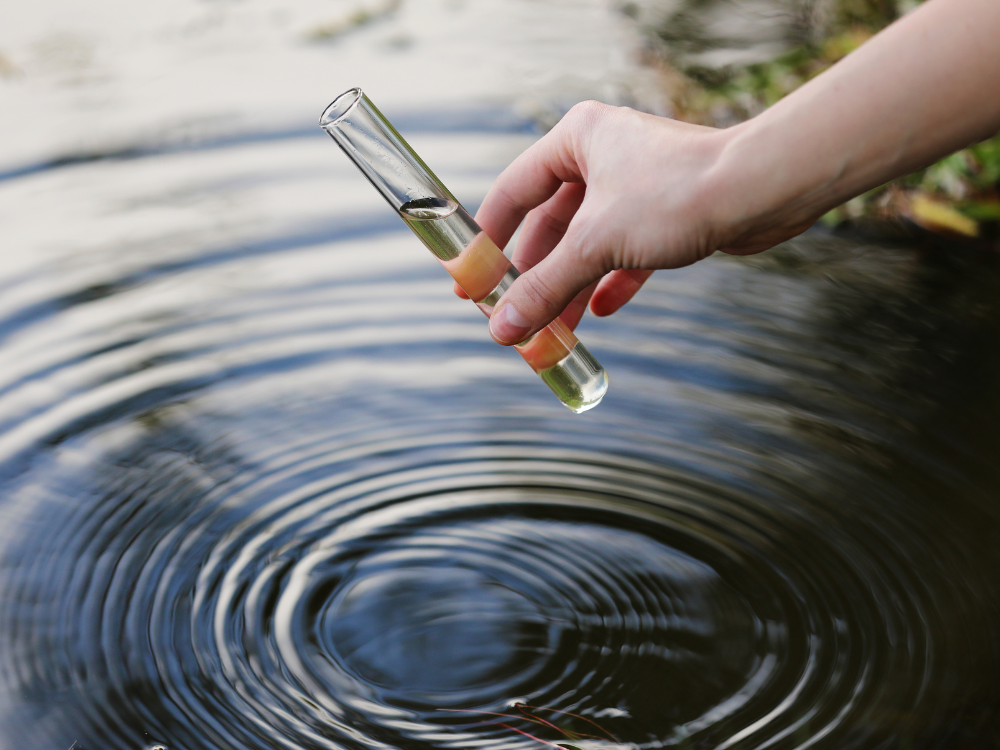Environmental Presence and Zinc Sources
Zinc, a bluish-white metallic element, is pivotal in human metabolic processes. In the Earth’s crust, air, soil, water, and all foods, it forms an integral part of our environment. Its significance extends to industries, where it prevents rust through galvanization, forms alloys like brass, and contributes to battery and paint production.
Zinc Compounds: Building Blocks with Widespread Applications
Zinc combines with elements like chlorine, oxygen, and sulfur to create compounds such as zinc chloride, zinc oxide, zinc sulfate, and zinc sulfide. These compounds find applications in diverse industries, including paints, ceramics, and medicines. Unfortunately, they are also prevalent in hazardous waste sites.

Exploring Environmental Zinc Levels
Air Quality Dynamics
Zinc concentrations in the air vary between rural and urban areas. Rural atmospheric levels range from 10 to 100 ng/m³, while urban areas commonly experience concentrations within 100–500 ng/m³.
Insights into Water Sources
In natural surface waters, zinc concentrations usually stay below 10 µg/litre but rise to 10–40 µg/litre in groundwaters. However, tap water may show higher levels due to zinc leaching from piping and fittings.
Impact of Corrosive Waters
Corrosive waters, characterized by low pH, high carbon dioxide, and low mineral salts, contribute to elevated zinc levels. A Finnish survey revealed tap water concentrations reaching 1.1 mg/litre, while well water exceeded 24 mg/litre.
Food Composition and Zinc
Zinc-rich foods, such as meat and marine organisms, contain concentrations ranging from 10 to 50 mg/kg wet weight, whereas grains, vegetables, and fruits typically contain less than 5 mg/kg. North American adults consume 10 to 15 mg/day through mixed diets.
Natural and Human-Induced Routes of Zinc Entry
Zinc enters the environment through natural processes and human activities, including mining, steel production, and coal burning. Mining and industrial activities contribute to elevated atmospheric zinc levels, and waterways receive discharges from metal manufacturing, zinc chemical industries, and zinc-containing waste.
Soil and Water Dynamics
Soil becomes enriched with zinc through waste disposal, sludge, and fertilizer use. While most zinc in soil remains bound and non-dissolvable, groundwater contamination can occur, impacting animal and human health. Fish, through water exposure, accumulate zinc in their bodies.
Occupational Exposure to Zinc
Occupational settings, like zinc mining, smelting, welding, and manufacturing, expose individuals to higher zinc levels. Construction workers, mechanics, and painters also face occupational zinc exposure.

Zinc Health Effects: Understanding the Risks
Inhalation of zinc dust or fumes, common in industrial settings, can lead to metal fume fever, a reversible short-term condition. However, the long-term effects of such exposure remain incomplete.
Adverse Effects of Excessive Intake
Consuming large amounts of zinc through food, water, or supplements can result in stomach cramps, nausea, vomiting, anemia, pancreatic damage, and reduced high-density lipoprotein (HDL) cholesterol.
Nutritional Deficiency and Toxicity
Insufficient zinc intake can lead to a loss of appetite, decreased immune function, slow wound healing, skin sores, poorly developed sex organs, and retarded growth in young individuals.
Impact on Children: A Growing Concern
Growth and Development: Zinc is vital for children’s growth and development. Inadequate zinc levels during pregnancy can lead to birth defects and a lower birth weight. Phytate-rich foods may hinder zinc absorption in children.
Cautionary Measures for Families
Families residing near waste sites should supervise children to prevent soil ingestion and promote frequent handwashing. Monitoring zinc intake from medicines and supplements is crucial.
Medical tests measuring zinc levels in blood, feces, urine, and saliva help assess exposure.

Dissolved Zinc in Water: A Telling Sign
Dissolved zinc impacts water taste and appearance. Concentrations of 30 mg/L may result in a bitter, medicinal taste, while elevated levels can cause a milky appearance.
Treatment Methods for Zinc in Drinking Water
Treatment for Acidic Water
Exposure to acidic water dissolves zinc, along with iron, lead, and cadmium, from the metal surface.
Reverse Osmosis Filter
Using a reverse osmosis filter can drastically reduce water solids.
Life Sciences™ introduces its cutting-edge Reverse Osmosis Alkaline Water Purifying Generator with innovative Tankless Technology. This state-of-the-art system, capable of removing up to 98% of contaminants, includes five specialized filters. The Alkaline Water RO Filter improves hydration and provides 40 health benefits, fortified with calcium, magnesium, and potassium minerals. With a lifetime warranty, this premium-quality system boasts an additional bonus – a Borosilicate Glass Water Pitcher with Infuser, featuring the powerful “Flower of Life” symbol for enhanced alkaline water. This superior water purification is value-priced at $597, made possible by designing and manufacturing our own products, eliminating the middleman. Learn More

Bonus Features:
Borosilicate Glass Water Pitcher with Infuser:
- Enhance the convenience of alkaline water on the table or in the fridge.
- Comes with a stainless steel infuser, allowing users to create infused herb water, hot or iced coffee, and other flavorful alkaline beverages.
- Versatile design for stove-top use for hot drinks or cold drinks from the fridge.
Conclusion: Navigating the Waters of Zinc Awareness
Understanding the causes, effects, and effective treatment methods for elevated zinc levels in drinking water is essential for water quality. Addressing zinc exposure is crucial for both environmental and human health.
Stay informed and proactive about zinc-related issues to ensure a healthier water supply. Get a Free water quality analysis report with Life Water Report. Improve your hydration experience with our alkaline water pitcher, providing health benefits and improved taste. Don’t miss out – visit link

